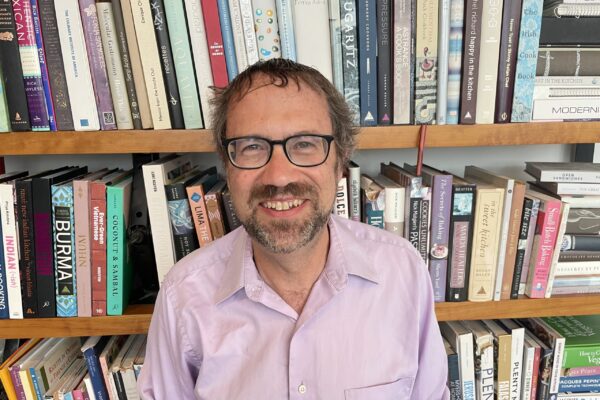AUSTIN, Texas — The John Simon Guggenheim Memorial Foundation has named University of Texas at Austin classicist Andrew M. Riggsby a 2024 fellow. Riggsby is one of 188 fellows chosen from a pool of almost 3,000 applicants on the basis of prior career achievement and exceptional promise.
Riggsby, the Lucy Shoe Meritt Professor in Classics, is a historian of the ancient Roman world and author of several books. His scholarship focuses on the history of information in the Roman world and the broader ancient Mediterranean, applications of cognitive science to the analysis of historical questions, and Roman law. The fellowship will facilitate Riggsby’s work on a new book called “Reading Roman Minds.”
“It’s an attempt to write the history of the ancient world with help from cognitive science,” Riggsby said. “I’m interested in how modern science can both resolve old questions and open up new lines of inquiry, and I have arguments about what history can offer back to cognitive studies. It’s a project with a lot of moving parts. It will be invaluable to have uninterrupted time to connect them all, to allow them to build on one another, and to put it all in the most widely accessible form that I can.”
The John Simon Guggenheim Memorial Foundation centers the talents and instincts of the fellows for the purpose of broad and immediate social impact. Many fellows’ projects directly respond to timely issues such as democracy and politics, identity, disability activism, machine learning, incarceration, climate change and community. Since its establishment in 1925, the foundation has granted over $400 million in fellowships to over 19,000 individuals, among whom are more than 125 Nobel laureates and members of all the national academies.
“Andrew Riggsby has an uncanny ability to organize fine-grained and overlooked details into transformative images of Roman history,” said Sean Gurd, chair of UT’s Department of Classics. “He is a true leader in the field. I am delighted for him and proud to be a colleague.”
This will be Riggsby’s second book exploring the intersection of history and science/technology.




